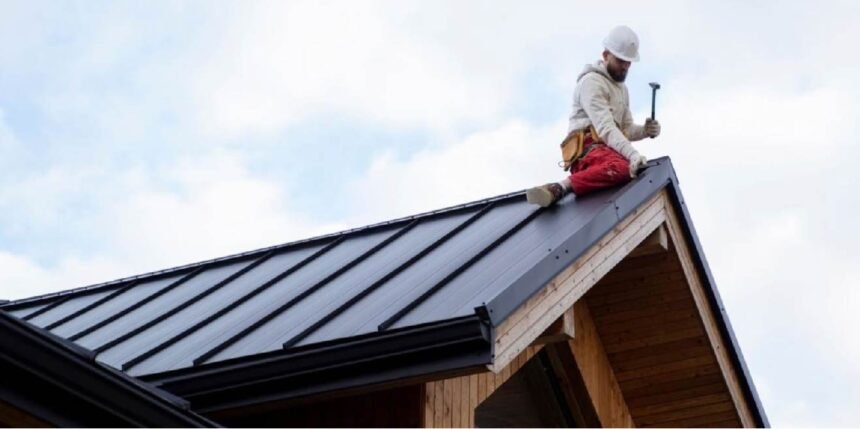Introduction
Your roof is one of the most important components of your home. It shields your family from harsh weather, contributes to energy efficiency, and adds value to your property. Yet, residential roofing is often overlooked—until there’s a leak, damage, or a visible sign of aging. Understanding the ins and outs of your roofing system can help you make smarter decisions when it’s time for repairs, replacements, or new installations.
In this comprehensive guide, we’ll break down everything you need to know about residential roofing—from materials and maintenance to hiring the right contractor and spotting early signs of trouble.
What Is Residential Roofing?
Residential roofing refers to the materials, structures, and systems used to cover homes, providing protection from the elements. Unlike commercial roofing, which often requires flat or low-slope systems and industrial-grade materials, residential systems are designed for homes and are more focused on aesthetics, insulation, and long-term durability.
Whether you own a traditional single-family house or a multi-unit residence, the type of roofing you choose—and how well it’s installed—plays a critical role in your home’s comfort, safety, and value.
Types of Roofing Materials for Homes
When selecting a roofing material, several factors come into play: your budget, local climate, aesthetic preferences, and expected lifespan. Here are the most common materials used in residential roofing today:
1. Asphalt Shingles
- Pros: Affordable, widely available, easy to install
- Lifespan: 15–30 years
- Best For: Budget-conscious homeowners
2. Metal Roofing
- Pros: Durable, energy-efficient, fire-resistant
- Lifespan: 40–70 years
- Best For: Long-term investment and extreme weather areas
3. Wood Shakes and Shingles
- Pros: Natural look, eco-friendly options
- Lifespan: 25–40 years
- Best For: Rustic or traditional home styles
4. Clay or Concrete Tiles
- Pros: Excellent durability, attractive design
- Lifespan: 50+ years
- Best For: Mediterranean or Spanish-style homes
5. Slate Roofing
- Pros: Very long lifespan, classic look
- Lifespan: 75–100 years
- Best For: High-end, historic, or luxury homes
Signs You Need a New Roof or Major Repairs
Recognizing early warning signs can save you from expensive repairs down the road. Here are some indicators that your residential roofing system may be compromised:
- Curling or missing shingles
- Leaks in the attic or ceiling
- Sagging roofline
- Excessive granules in gutters (from asphalt shingles)
- Visible cracks, moss, or mold growth
- Increased energy bills from poor insulation
If you notice any of these signs, contact a roofing professional promptly to evaluate the condition and recommend the best course of action.
How Long Does a Residential Roof Last?
The lifespan of your roof largely depends on the material used and the climate you live in. Here’s a general guide:
| Material | Average Lifespan |
| Asphalt Shingles | 15–30 years |
| Metal Roofing | 40–70 years |
| Wood Shakes | 25–40 years |
| Tile (Clay/Concrete) | 50–100+ years |
| Slate Roofing | 75–100+ years |
Keep in mind that proper installation and regular maintenance can significantly extend these lifespans.
Essential Roof Maintenance Tips for Homeowners
Routine maintenance helps prevent costly issues and extends the life of your roofing system. Here are simple steps you can take:
1. Inspect Annually
Look for damaged, missing, or aging shingles. Use binoculars from the ground or hire a professional to do a full inspection.
2. Clean Gutters
Blocked gutters cause water to back up, which can rot your fascia and leak into the roof deck.
3. Remove Debris
Clear off leaves, branches, or snow that could add weight or moisture.
4. Trim Overhanging Branches
Falling limbs can damage your roof, while shade and debris encourage moss and mold growth.
5. Address Minor Repairs Immediately
Fixing small issues (like lifted shingles or minor flashing problems) can prevent larger—and more expensive—problems later.
Choosing the Right Roofing Contractor
Not all roofing contractors are created equal. Hiring the right team for your residential roofing job is as important as selecting the right materials. Here are the key factors to consider:
Licensing and Insurance
Ensure your contractor is fully licensed and insured to protect your property and their workers.
Experience and Reputation
Look for contractors with experience in residential roofing and solid reviews or referrals.
Warranty Offered
A good roofing company offers both material and labor warranties. Always get it in writing.
Detailed Written Estimates
Never accept verbal quotes. A proper estimate should include costs, timelines, materials, and services.
Communication
Choose a contractor who communicates clearly and is responsive to your questions.
Energy Efficiency and Your Roof
Did you know your roof can influence your energy bills? Here’s how:
- Reflective Materials: Light-colored or metal roofs reflect heat, keeping your home cooler.
- Ventilation: Proper attic ventilation prevents heat buildup and extends roof life.
- Insulation: A well-insulated roof helps regulate indoor temperatures, reducing energy usage.
By investing in energy-efficient residential roofing, you can reduce your environmental footprint and save on utilities over time.
Eco-Friendly Roofing Options
If sustainability is important to you, there are several eco-conscious roofing choices:
- Recycled Shingles: Made from rubber, plastic, or wood fibers.
- Metal Roofing: Often made from recycled materials and fully recyclable.
- Green Roofs: Living vegetation systems that absorb rainwater and insulate your home.
- Cool Roofs: Reflect sunlight and release heat efficiently, reducing the urban heat island effect.
Roofing and Home Value
A new roof is one of the most valuable home improvements you can make. According to real estate data, homeowners can expect to recover a significant percentage of the cost in increased home value—sometimes up to 60–70%.
A well-installed residential roofing in Montclair, NJ system not only protects your home but also boosts its curb appeal and resale potential. It’s an investment that pays off in more ways than one.
Final Thoughts
Your roof is more than just a protective cover—it’s a vital part of your home’s structural integrity, energy efficiency, and appearance. Whether you’re repairing damage, upgrading materials, or installing a brand-new system, understanding the essentials of residential roofing helps you make informed and cost-effective decisions.
From choosing the right materials to hiring qualified contractors and performing regular maintenance, each step plays a role in extending the lifespan and functionality of your roof.
If you’re considering any roofing work, don’t cut corners. A quality residential roofing system ensures that your home remains safe, beautiful, and energy-efficient for years to come.







